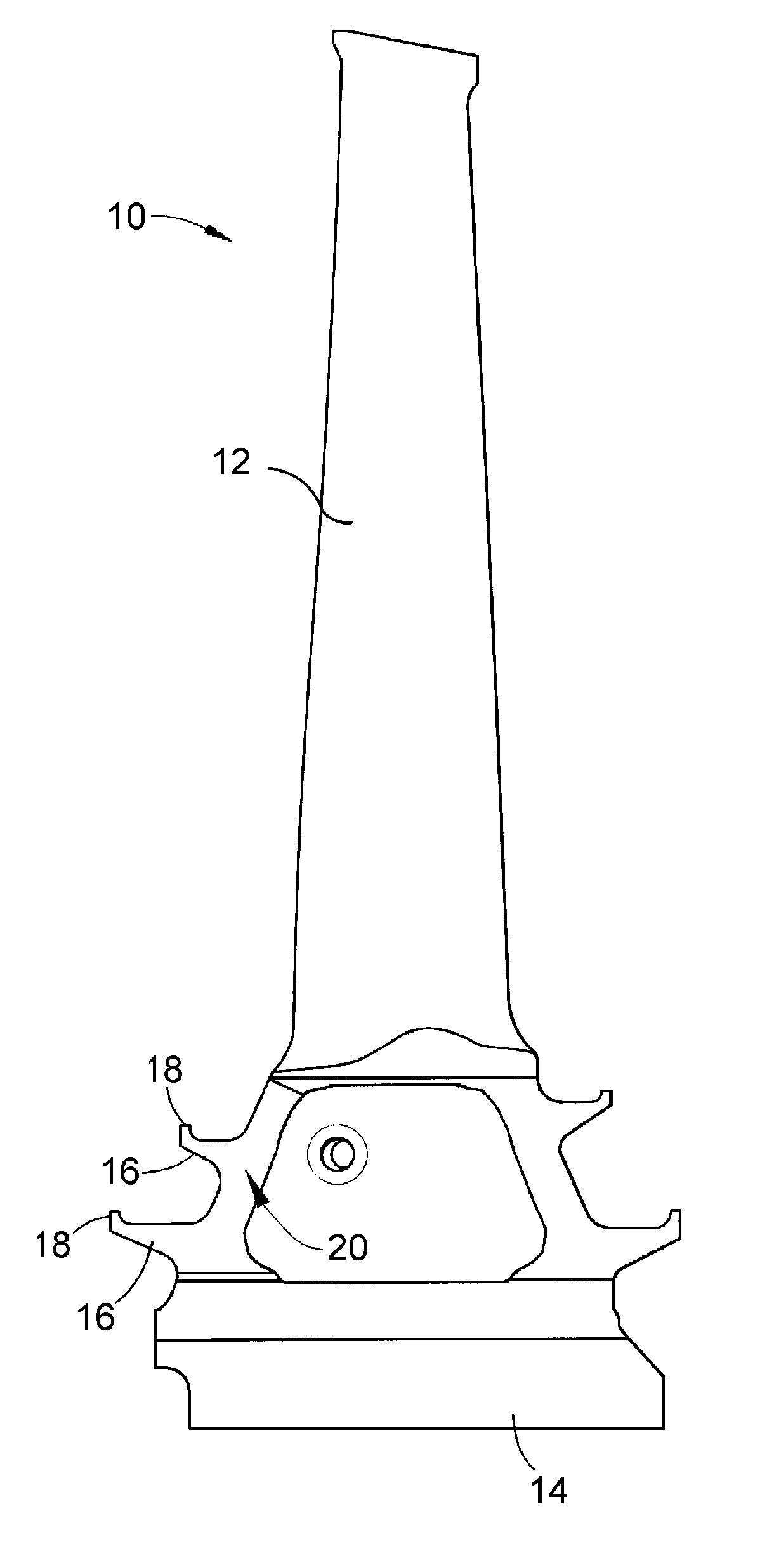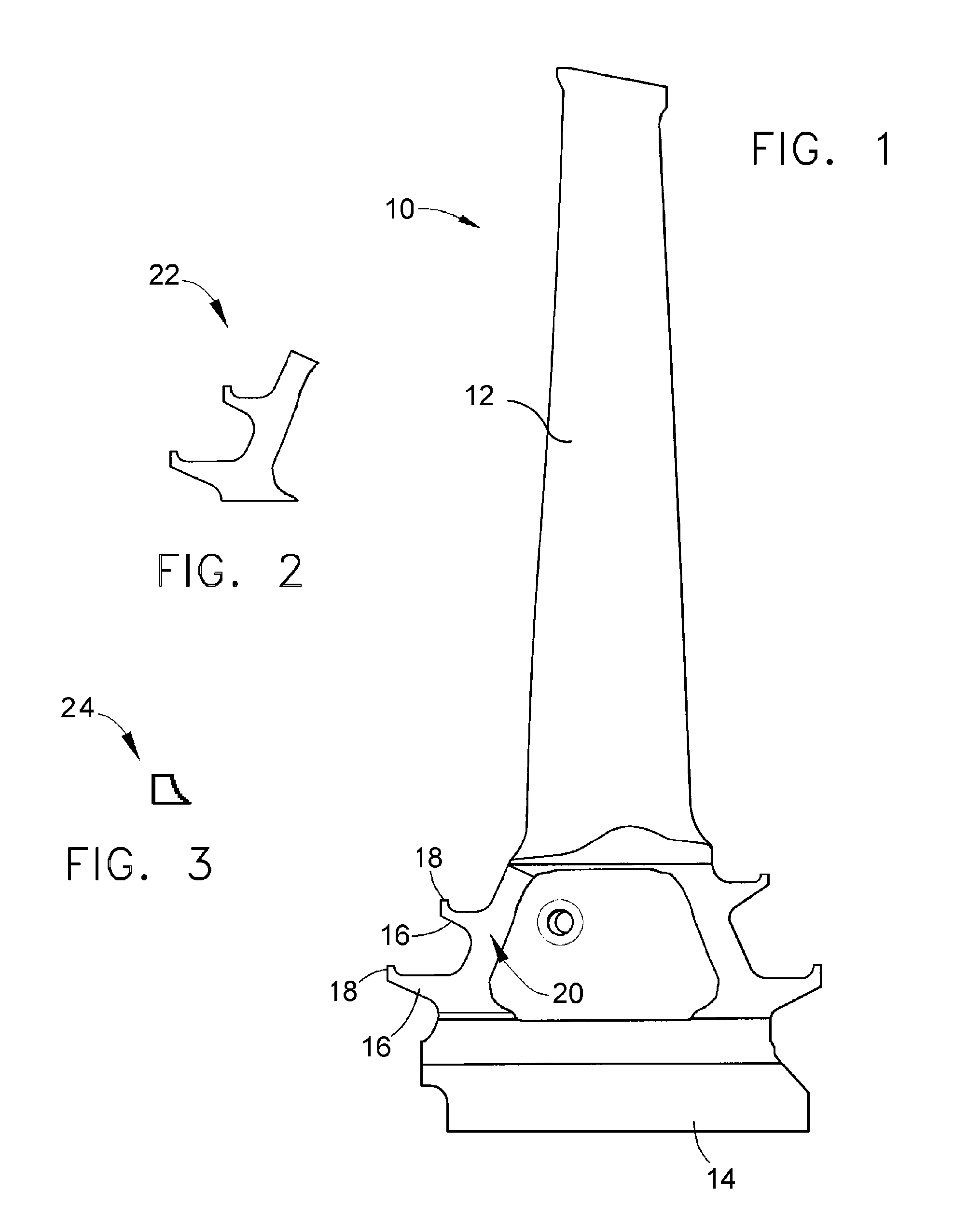Preform and method of repairing nickel-base superalloys and components repaired thereby
a nickel-base superalloy and component technology, applied in the direction of solid-state diffusion coating, machines/engines, transportation and packaging, etc., can solve the problems of gtaw not being a suitable repair method, various types of damage or deterioration can occur, wear and cracks tend to develop on the angel wings of the latter stage bucket, etc., to achieve the effect of minimizing distortion
- Summary
- Abstract
- Description
- Claims
- Application Information
AI Technical Summary
Benefits of technology
Problems solved by technology
Method used
Image
Examples
Embodiment Construction
[0016]FIG. 1 represents a third stage turbine bucket 10 of a type used within the turbine section of an industrial gas turbine. The bucket 10 is represented as a casting prior to final machining, and includes an airfoil 12 extending from a root portion 14. Various high-temperature materials can be used to form the bucket 10, notable examples of which include the commercially-known GTD-111 and GTD-444 nickel-base superalloys. The present invention is particularly concerned with components formed of highly alloyed nickel-base superalloys having high gamma-prime contents, such as GTD-444, whose nominal composition, in weight percent, is about 9.5-10% chromium, about 7-8% cobalt, about 3.35-3.65% titanium, about 4.1-4.3% aluminum, about 5.75-6.25% tungsten, about 1.30-1.705 molybdenum, about 4.60-5.0% tantalum, about 0.06-0.1% carbon, about 0.0080-0.010% zirconium, about 0.008-0.0105% boron, and the balance being nickel and incidental impurities. The GTD-444 is formulated as a direction...
PUM
| Property | Measurement | Unit |
|---|---|---|
| melting temperature | aaaaa | aaaaa |
| temperature | aaaaa | aaaaa |
| melting temperature | aaaaa | aaaaa |
Abstract
Description
Claims
Application Information
 Login to View More
Login to View More - R&D
- Intellectual Property
- Life Sciences
- Materials
- Tech Scout
- Unparalleled Data Quality
- Higher Quality Content
- 60% Fewer Hallucinations
Browse by: Latest US Patents, China's latest patents, Technical Efficacy Thesaurus, Application Domain, Technology Topic, Popular Technical Reports.
© 2025 PatSnap. All rights reserved.Legal|Privacy policy|Modern Slavery Act Transparency Statement|Sitemap|About US| Contact US: help@patsnap.com


